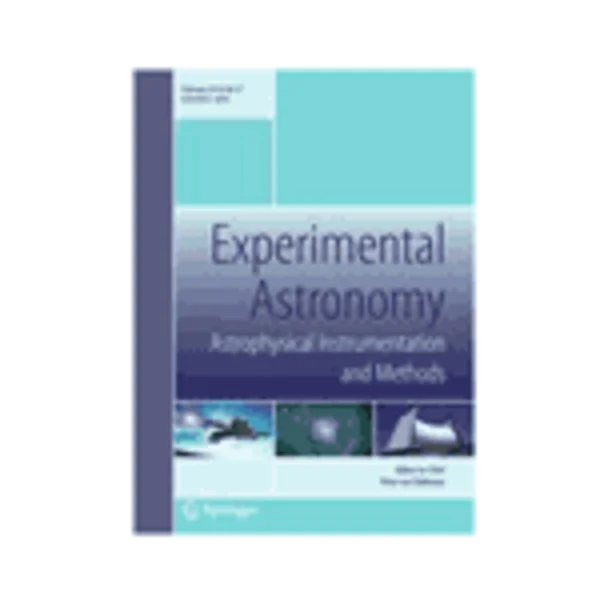-
weighting interferometric data for direct imaging
جزئیات بیشتر مقاله- تاریخ ارائه: 1392/07/24
- تاریخ انتشار در تی پی بین: 1392/07/24
- تعداد بازدید: 919
- تعداد پرسش و پاسخ ها: 0
- شماره تماس دبیرخانه رویداد: -
the new generation interferometric arrays such as the atacama large millimeter/submillimeter array (alma) are composed of a large number of telescopes and their configurations are optimized for fourier plane (a.k.a. uv-plane) coverage. as a consequence, solving for the missing information in the uv-plane is becoming less critical and the imaging algorithms can be revisited. the situation is getting similar to that encountered with single filled aperture telescopes and it is becoming possible to make images in a direct way. in this article a new weighting method is introduced to obtain “pseudo-clean” images without using prior information to solve for the fourier transform of the source. this method is similar but not equivalent to the successive application of robust weighting and tapering at different scales. the idea is to weight the data to compensate for the imperfect distribution of natural weights in the uv-plane. the price to pay for this direct imaging technique is that the final point spread function (psf or beam) may not follow a simple analytical shape such as a gaussian (but this is also the case in optical astronomy) and some sensitivity is lost (but this is the case with any imaging algorithm in interferometry). two parameters are introduced to control the trade-off between imaging quality and sensitivity, namely a threshold parameter and a coupling parameter. this method is applied to simulated alma observations with 16, 32 and 50 antennas. as expected this method is found to be more efficient with more antennas and for more compact configurations because the uv-plane coverage is more complete. with 50 antennas in compact configuration it is possible to reduce the amplitude of the inner sidelobes (outer sidelobes) by a factor >6 (>2) compared to natural weighting for ~10 % loss in sensitivity, leading to sidelobes lower than 1.6 % of the main lobe peak value. with 16 antennas only, the method can still be used to reduce the inner sidelobes of a compact configuration by a factor >2 for ~10 % loss in sensitivity. this method can therefore be used with the new generation interferometric arrays to efficiently produce images without relying on any assumptions about the sources. the dynamic range of the resulting images depend on the number of telescopes in the array, the source size and the acceptable level of sensitivity loss.
مقالات جدیدترین رویدادها
-
استفاده از تحلیل اهمیت-عملکرد در ارائه الگوی مدیریت خلاقیت سازمانی و ارائه راهکار جهت بهبود
-
بررسی تاثیر ارزش وجوه نقد مازاد بر ساختار سرمایه شرکت های پذیرفته شده در بورس اوراق بهادار تهران
-
بررسی تأثیر سطح افشای ریسک بر قرارداد بدهی شرکت های پذیرفته شده در بورس اوراق بهادار تهران
-
بررسی تأثیر رتبه بندی اعتباری مبتنی بر مدل امتیاز بازار نوظهور بر نقد شوندگی سهام با تأکید بر خصوصی سازی شرکت ها
-
تأثیر آمیخته بازاریابی پوشاک ایرانی بر تصویر ذهنی مشتری پوشاک ایرانی (هاکوپیان)
-
پیش بینی شدت نارسایی قلبی به کمک رادیوگرافی قفسه صدری نمای رخ در بیماران بستری در بخش قلب بیمارستان بوعلی اردبیل
-
تغییرسازمانی
-
تشخیص و طبقه بندی سرطان رحم با استفاده از روش ترکیبی برش گراف و بخش بندی رنگ
-
a tableau based decision procedure for an expressive fragment of hybrid logic with binders, converse and global modalities
-
the archaeology of tula, hidalgo, mexico
مقالات جدیدترین ژورنال ها
-
مدیریت و بررسی افسردگی دانش آموزان دختر مقطع متوسطه دوم در دروان کرونا در شهرستان دزفول
-
مدیریت و بررسی خرد سیاسی در اندیشه ی فردوسی در ادب ایران
-
واکاوی و مدیریت توصیفی قلمدان(جاکلیدی)ضریح در موزه آستان قدس رضوی
-
بررسی تاثیر خلاقیت، دانش و انگیزه کارکنان بر پیشنهادات نوآورانه کارکنان ( مورد مطالعه: هتل های 3 و 4 ستاره استان کرمان)
-
بررسی تاثیر کیفیت سیستم های اطلاعاتی بر تصمیم گیری موفق در شرکتهای تولیدی استان اصفهان (مورد مطالعه: مدیران شرکتهای تولیدی استان اصفهان)
-
بررسی نقش رهبری تحول گرا بر خلاقیت سازمانی با توجه به نقش میانجی حمایت سازمانی درک شده (مورد مطالعه، شرکت ایران خودرو)
-
آشنایی با شاخصه ها و ویژگی های تعلیم و تربیت اسلامی و بهره گیری از آن ها برای آموزش کودکان دبستانی
-
تأثیر جریان نقد آزاد مازاد به واسطه کیفیت حسابرسی بر مدیریت سود شرکت های پذیرفته شده در بورس اوراق بهادار
-
برقراری امنیت کاربران بانکی بوسیله احراز هویت بیومتریک اثر انگشت توسط رمزنگاری جریان
-
بررسی پیشنهاد « ادبیات کاربردی » پی یر بَیار و ایده « استلزام » شوشانا فلمن از منظر ژک لکان




سوال خود را در مورد این مقاله مطرح نمایید :